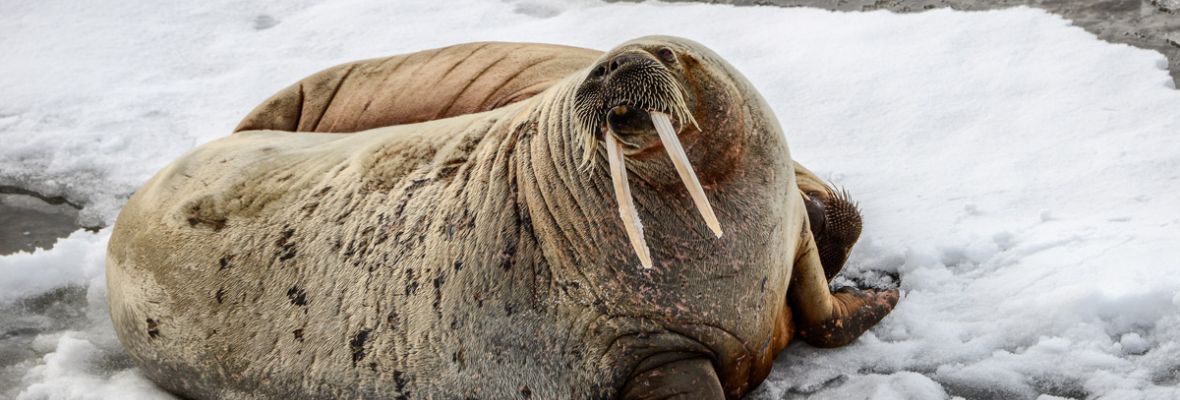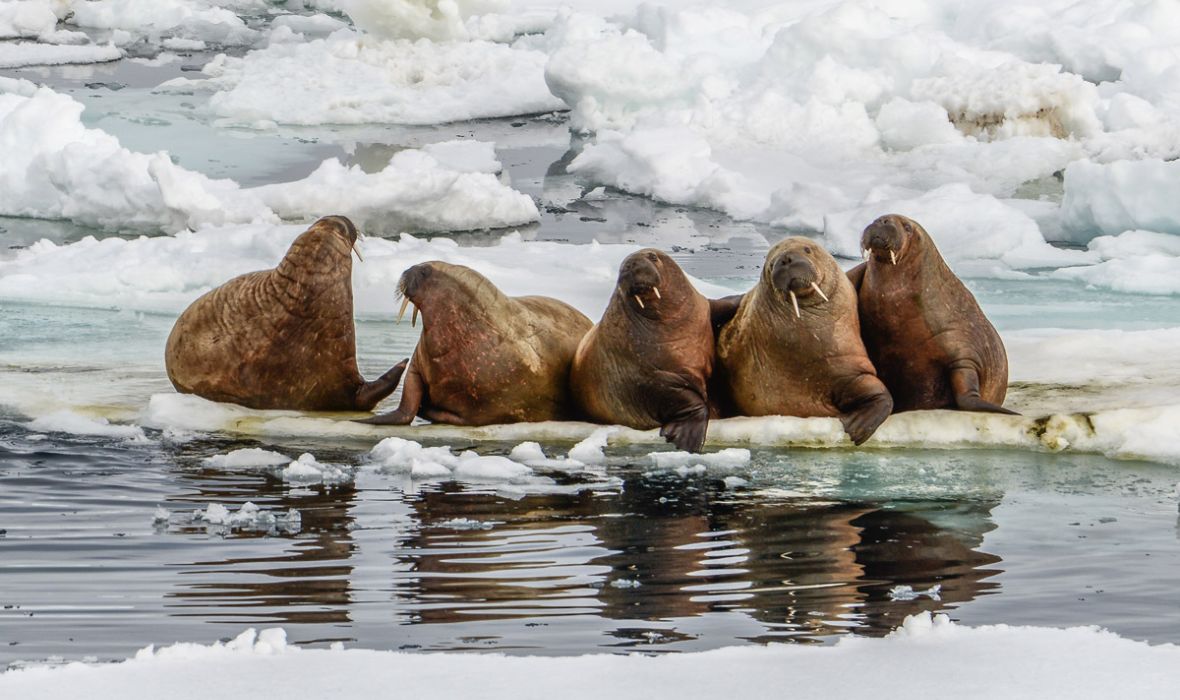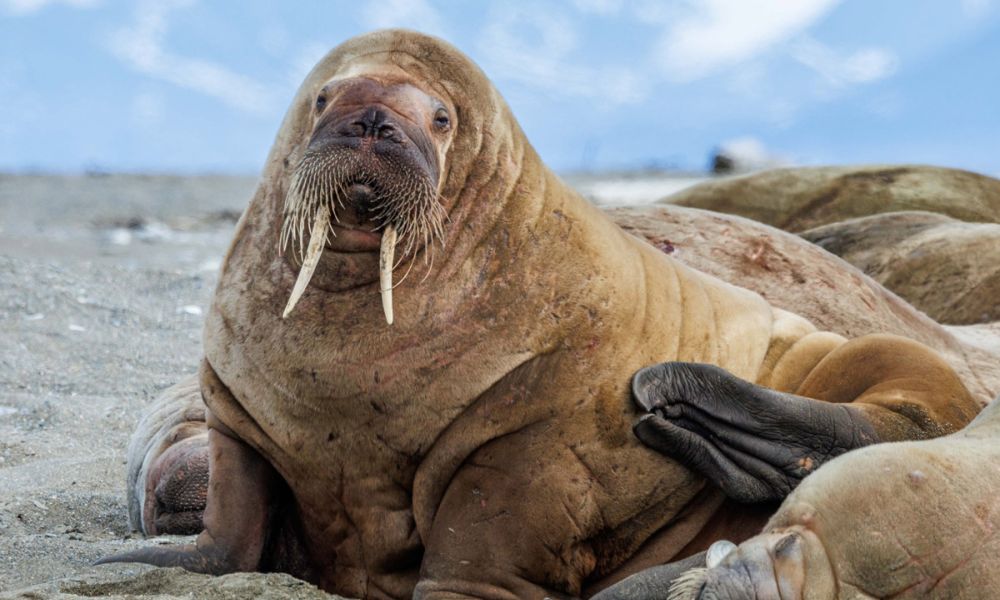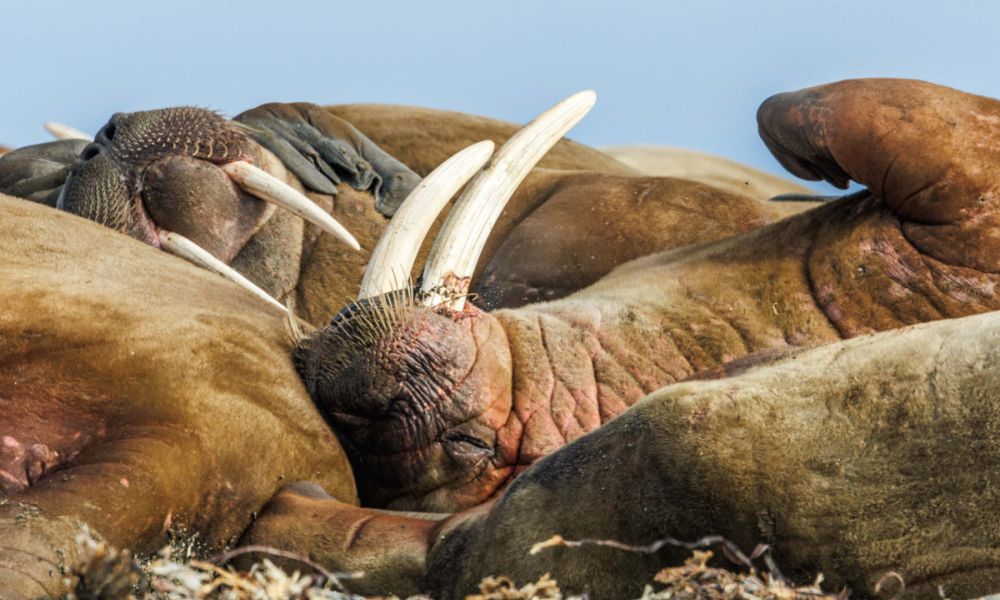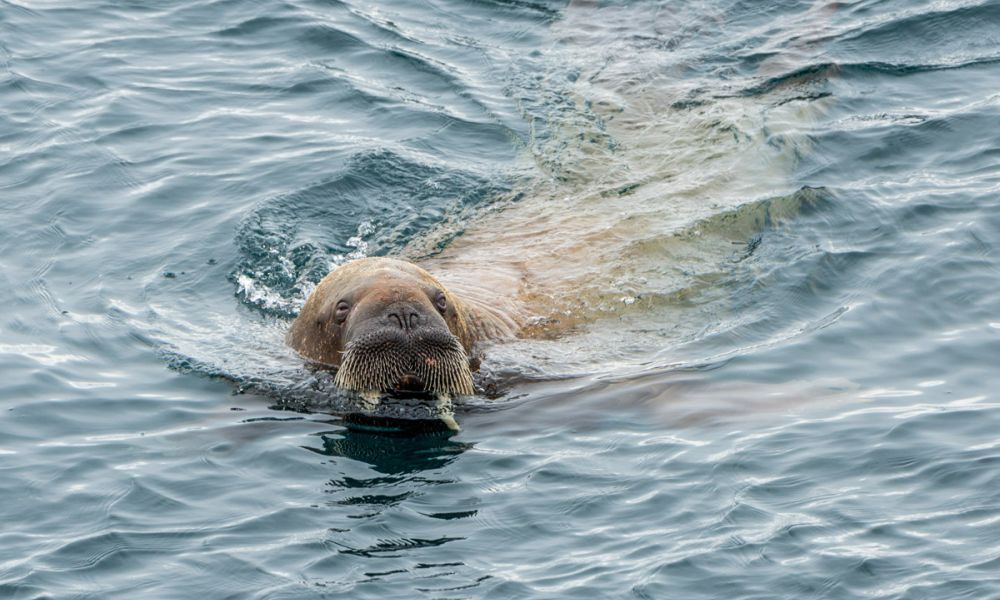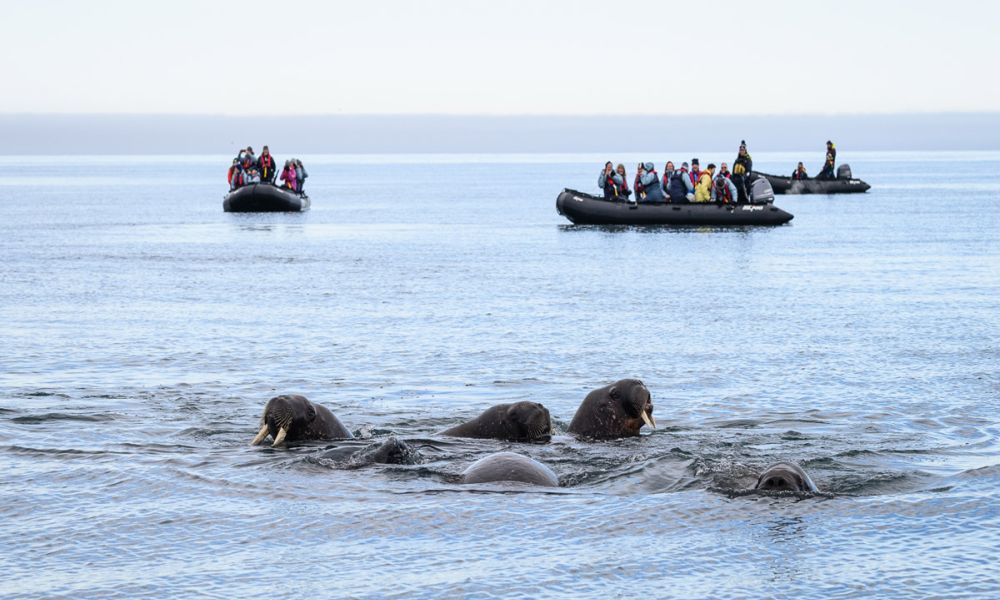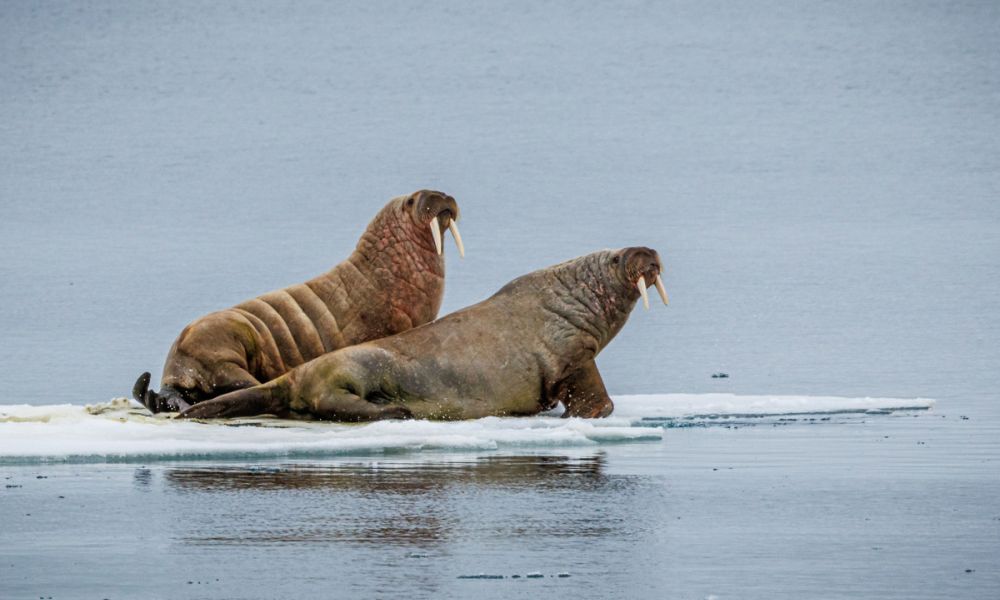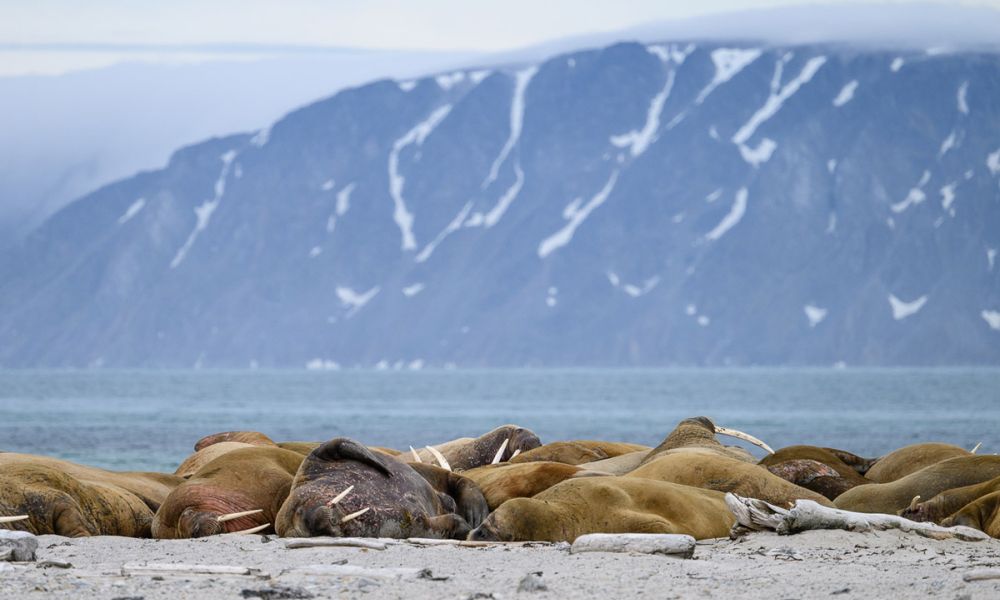What Does a Walrus Look Like?
Walruses have short brownish fur and skin, which appear darker in pups but gradually lighten with age. The fur often becomes thin and patchy in older males, and large warty growths may develop on the throat. When they are on land, their skin can appear pink due to increased blood flow, while after emerging from water, it can look grey. Beyond their distinctive skin and fur, walruses have unique anatomical features that set them apart from other pinnipeds. They lack external ears and rely on their rear flippers for propulsion in the water. On land, their bare flipper surfaces and four nipples further distinguish them from other seal species.
How Many Species of Walrus Are There?
There are three different subspecies that can be spotted in the Arctic. The Pacific walrus (Odobenus rosmarus divergens) is the largest subspecies, and its name already suggests the region where they are found. The smallest subspecies are the Atlantic walrus (Odobenus rosmarus rosmarus) and the Laptev walrus (Odobenus rosmarus laptevi), which live in the Atlantic regions near Greenland and Svalbard. In addition to its greater size, the Pacific species features longer tusks, broader skulls, and a population eight times larger than the Atlantic species.
What Sound Does a Walrus Make?
They produce loud, bell-like sounds, grunts, and whistles, particularly during the mating season when vocalisations are vital for attracting mates and establishing dominance within their groups
Can They Breathe Underwater?
No, these large seals cannot breathe underwater, but can hold their breath for up to 25 minutes while diving.
Is a Walrus a Mammal?
Yes, they are marine mammals that belong to the Odobenidae family, which also includes seals and sea lions. Males typically range from 2.7 to 3.5 meters long and weigh between 800 to 1,900 kg. Females are slightly smaller, measuring 2.25 to 3 meters long and weighing 400 to 1,200 kg. Only the elephant seal surpasses their size among the seal species, while female walruses are the largest among all female seals.
How Long Is a Walrus Tusk?
Walruses are easily distinguishable from all other Arctic seals, not only due to their size but also by the large and very visible tusks in the upper mouth of both sexes. Those two teeth can grow to half a meter long, with some reaching nearly a meter. Males have the longest and thickest tusks, which they use to break through ice, pull themselves onto the surface, and rest in breathing holes. Tusks also serve as weapons for dominance battles and defence against predators like polar bears. Despite their impressive size, they do not use the tusks to consume food.
What Do They Eat?
Their diet mainly includes clams, especially soft-shell clams, typically found in shallow waters. In certain situations, they might need to dive up to 250 m (820 ft) for nearly 25 minutes to find them. It has been believed that they use their tusks for digging, but this is not accurate. Instead, they rely on their thick and sensitive whiskers on the upper lip to locate the clams. Once a clam is in the mouth, they suck the meat out and discard the shells. Throughout this process, they push the muddy water away with one flipper (90% of the time, it is the right one), yet they can eat completely blindly, using their whiskers as "eyes." They can consume for up to 73 hours, eating approximately 7,000 clams, which equates to about 78 kg of meat, after which they sleep for a day. Outside the peak clam season, which lasts about three months, walrus's diet can include other bottom-dwelling creatures. Occasionally, they might also hunt seals or whale calves.
Are They Dangerous?
Walruses are generally not aggressive towards humans, but can be very dangerous when threatened. They utilise their tusks for defense and can fight off polar bears and other threats. Although most encounters assume that these seals are non-aggressive, they should always be approached carefully. When we come across one, we follow strict distancing rules. These animals are always handled with the highest caution.
How Is Their Gestation?
The female carries her pregnancy for 15 months and then gives birth to one baby walrus, known as a ‘calf’. Twins can occur on rare occasions. The newborn can weigh up to impressive 75 kg (187 lbs) and measure 1.2 m (4 ft) long. The pup nurses for two to three years, making it one of the longest nursing periods for any mammal.
How Long Does a Walrus Live?
Due to factors such as natural predators (polar bears and killer whales), hunting, and climate change, the population of mature individuals is declining, and according to IUCN, they are now classified as ‘Vulnerable’.



